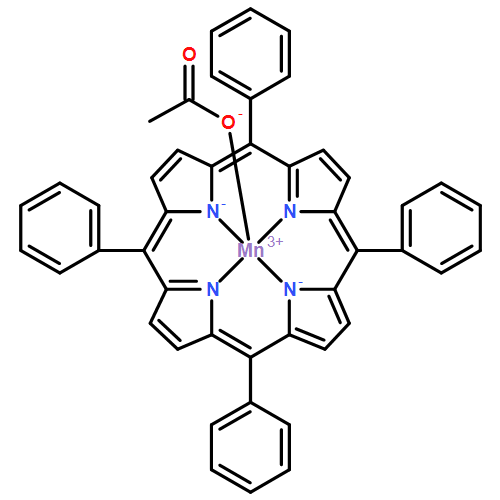Presented is a quick and efficient method for the insertion of first-row transition metal acetates into 5,10,15,20-tetraphenyl porphyrin, utilizing Soxhlet extraction for the removal of the acetic acid by-product. High yields (>90%) and purity are achieved without requiring chromatographic purification. Basic Mn(III) and Fe(III) acetate may be used, as well as hydrated Co(II), Ni(II), and Cu(II) acetates as starting materials. In the case of Fe, an initial mixture of Fe(TPP)OAc and [Fe(TPP)]2O is formed, which can be quantitatively converted to Fe(TPP)OAc by treatment with acetic acid. The crystal structure of Fe(TPP)OAc is reported, and spectral data for all compounds is presented, including a correction of the literature UV–Vis data for Fe(TPP)OAc. Attempted metalation with basic Cr(III) acetate yielded a mixture of Cr(TPP)OAc and the oxo-bridged dimer. The latter cannot be converted to the desired acetate. No reaction occurred with vanadyl or titanyl acetate under the conditions used.Graphical abstractA new high-yielding synthetic procedure for the metalation of porphyrins is described. First-row transition metal acetates may be inserted into 5,10,15,20-tetraphyenyl porphyrin utilizing Soxhlet extraction for the removal of the acetic acid by-product. Basic Mn(III) and Fe(III) acetate may be used, as well as hydrated Co(II), Ni(II), and Cu(II) acetates as starting materials. High yields (>90%) and purity are achieved without requiring chromatographic purification.
![Image for unlabelled figure]()
Highlights► A convenient method for the metalation of porphyrins. ► The crystal structure of FeIII(TPP)OAc. ► Corrected UV–Vis data for FeIII(TPP)OAc.
